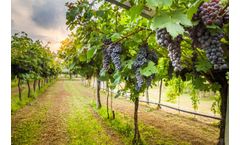Wine Quality Articles & Analysis
15 articles found
Wine grape production is both art and science and proper soil and vine nutrition is essential for top production of high-quality wines. ...
Fermentation, the chemical process that uses yeast to convert sugars to ethanol, is at the heart of the wine production process and requires accurate CO₂ measurement to ensure quality wines. Temperatures and conditions in wineries are very carefully controlled to ensure that fermentation does not occur too fast, distorting the flavour and alcohol ...
In addition to the production of fruit and vegetable juice and the clarification of fruit wine, pectinase can also be used to extract natural products. The extracts produced by pectinase include ginkgo biloba extract, garlic oil concentrate, and ginseng pulp. ...
2-minute read To achieve the desired quality of wine, grapes need to be harvested at a specific maturity level. ...
Now, the challenge is to bring as much of this yield potential to harvest, and at the desired quality. Irrigation management is crucial to achieve this goal. For most crops, irrigation should provide readily available soil moisture continuously so that fruit and nuts can expand or be filled without any stress. Drought stress during the summer can lead to fruit drop and ...
ByFarm(x)
Pest management An important aspect of producing premium quality wines are disease-free grapes and healthy vines, free of pests. ...
Wines are made in the vineyard, which is especially true for premium quality wines. ...
The Role of Wine Refrigeration Units The low temperature treatment of wine can improve and improve the quality of wine on the one hand. ...
Leaf Area/Crop Weight Ratios of Grapevines: Influence on Fruit Composition and Wine Quality. Am J Enol Vitic. 56: 170-181. Retrieved from http://www.ajevonline.org/content/56/2/170 Kunzmann, D. ...
Fermentation, the chemical process that uses yeast to convert sugars to ethanol, is at the heart of the wine production process and requires accurate CO₂ measurement to ensure quality wines. Temperatures and conditions in wineries are very carefully controlled to ensure that fermentation does not occur too fast, distorting the flavour and ...
In a previous post we discussed how Grapevine Leafroll disease affects grapevines but to quickly recap, Grapevine Leafroll Disease is one of the most common and persistent grapevine diseases; it can have devastating impacts on a vineyard, delaying fruit maturity and dramatically reducing fruit quality, pigmentation, vine vigor, and yield. With no cure for Leafroll, infected vines ...
ByVineView
Now that you know the difference between NDVI and EVI, and five ways to improve wine quality using VineView’s vine vigor products, it’s time to discuss when you should be collecting this important data, and how often. ...
ByVineView
A high level of attention to detail in the vineyard is one of the best predictors of a high-quality wine. Premium wine growers in California have trusted VineView’s aerial vigor maps to improve the growing conditions in their fields for almost two decades. ...
ByVineView
The wine industry has changed considerably in the past 20 years. While new market opportunities increased the trade of wine worldwide, scientific and technical changes have produced an improvement in the quality of wine. ...
South Africa's wine industry was ill-prepared for the highly competitive, brand-conscious consumer markets it encountered on re-entry into international markets. The bulk of production was basic quality wine. Wine marketing expertise was concentrated among smaller independent wine producers and a few large ...






![Precision viticulture technology a key to producing premium quality wines in changing climate [part 2] Precision viticulture technology a key to producing premium quality wines in changing climate [part 2]](https://d32zuqhgcrpxli.cloudfront.net/eyJidWNrZXQiOiJlZS1maWxlcyIsImtleSI6ImZpbGVzLzExMTU3Mi9pbWFnZXMvMTExNTcyXzBfMjAyMDEwMDgxNDQ2MDMyODkxMTk4XzQwMC5wbmciLCJlZGl0cyI6eyJyZXNpemUiOnsiZml0IjoiY29udGFpbiIsImJhY2tncm91bmQiOnsiciI6MjU1LCJnIjoyNTUsImIiOjI1NSwiYWxwaGEiOjF9LCJ3aWR0aCI6MjQwLCJoZWlnaHQiOjE0NX19fQ==)




